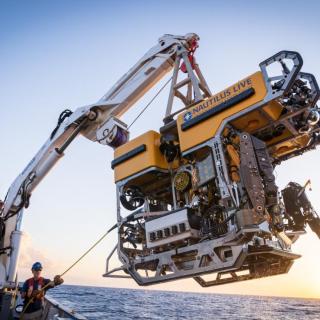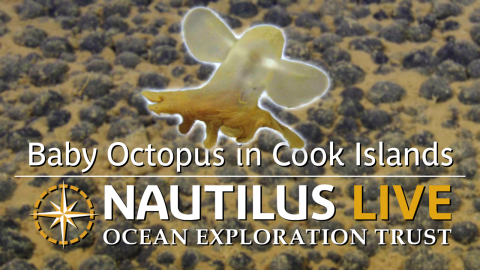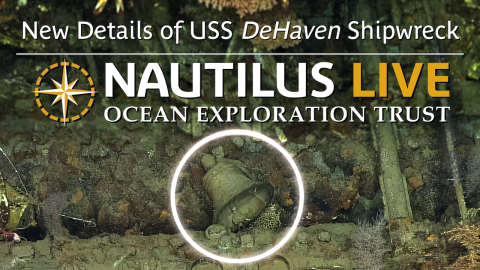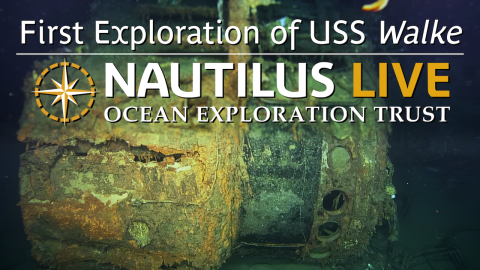Rare Views of Lost WWII Shipwreck HMAS Canberra
Across the Solomons campaign, the Empire of Japan and Allied nations clashed in land, air and sea battles. Thus there are many nation’s maritime heritage sites for our team to explore during the Maritime Archaeology of Guadalcanal (NA173) expedition! This highlight video comes from our ROVs Hercules and Atalanta’s exploration of the Australian heavy cruiser HMAS Canberra live interpreted by a team of international experts on E/V Nautilus and ashore with key support from including support from Dr. Mick de Ruyter of the Royal Australian Navy Sea Power Centre and Flinders University.
Built before World War II, Canberra served several periods as the flagship of the Australian Squadron assigned to protect the interests and waters of Australia and New Zealand. In the 1942 Battle of Savo Island, Canberra was struck by the Japanese 8th Fleet's opening shots of the engagement as it led a patrol column of US Naval ships. After losing power and listing, the crew was evacuated amid massive fires. The next morning, the ship was scuttled by torpedos from USS Selfridge and USS Ellet. Canberra remains the largest ship the Royal Australian Navy has ever lost in combat.
During this expedition, our team utilized the remotely operated vehicle and telepresence systems of E/V Nautilus, in combination with the mapping capabilities of uncrewed surface vehicle DriX, to conduct non-invasive archaeological surveys of cultural heritage sites in the Iron Bottom Sound. This expedition is supported by NOAA Ocean Exploration via the Ocean Exploration Cooperative Institute. This exploration is made possible by the expertise, support, and collaboration of many partners, including NOAA Ocean Exploration, U.S. Naval History and Heritage Command, Solomon Islands government, University of New Hampshire Center for Coastal and Ocean Mapping/Joint Hydrographic Center, University of Rhode Island, and Japanese, Australian, and New Zealand archaeological colleagues.

Maritime Archaeology of Guadalcanal: Iron Bottom Sound
Located in the Solomon Islands between the islands of Guadalcanal, Savo, and Nggela, Iron Bottom Sound was the stage of five major naval battles between August and December 1942 which resulted in the loss of over 20,000 lives, 111 naval vessels, and 1,450 planes. These underwater cultural heritage sites now rest on the seafloor offshore Honiara in a confined area less than 25 nautical miles wide, 40 nautical miles long, and 1,400 meters deep.



